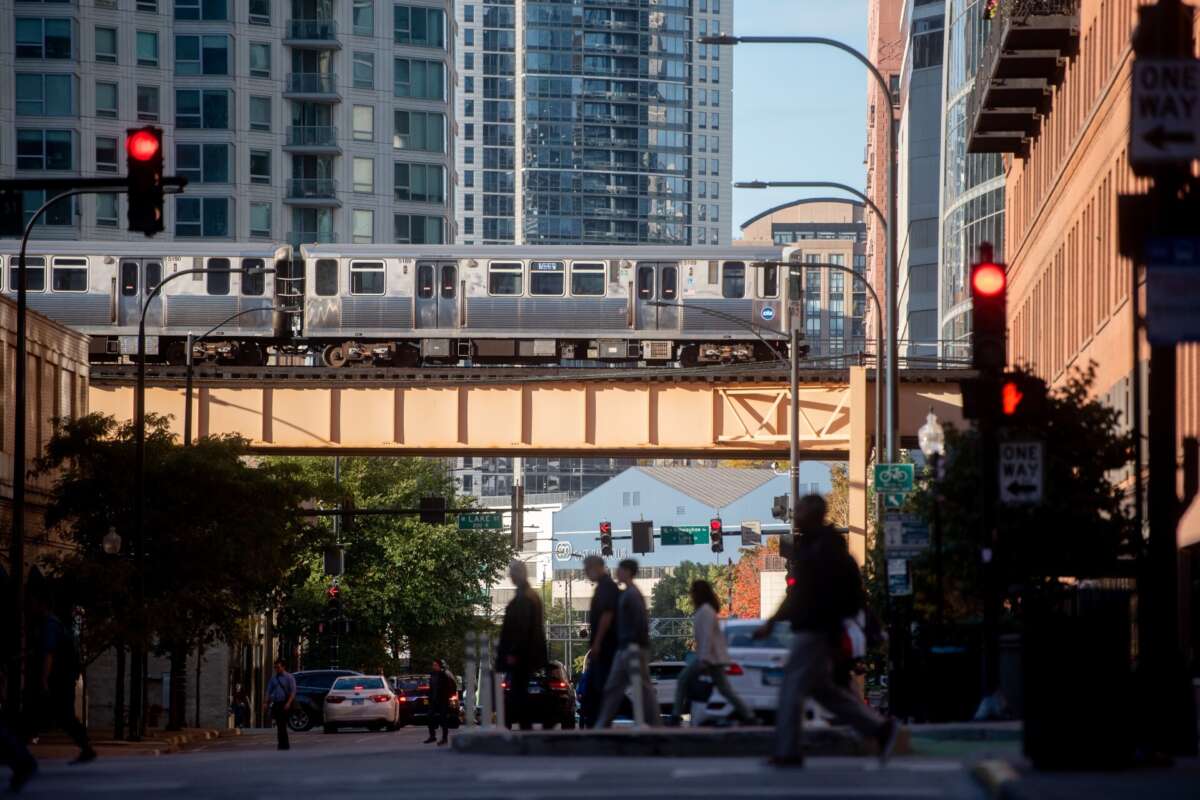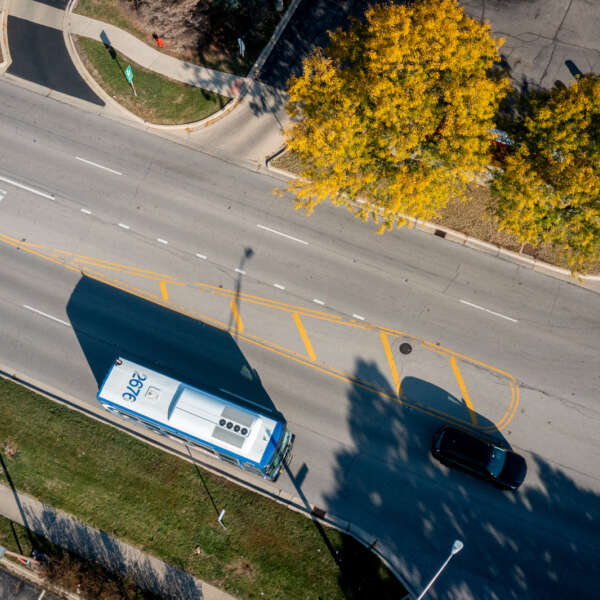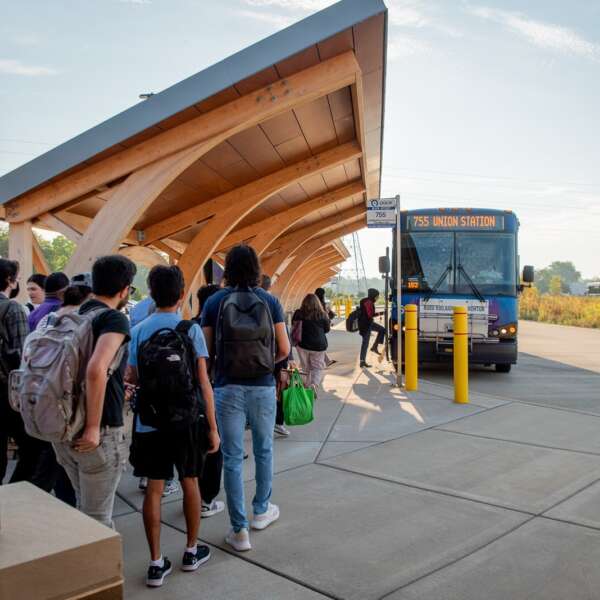How the RTA is prioritizing inclusive community engagement and transparency
June 15, 2023
June 15, 2023

This post is one in a series exploring the Agenda for Action and Advocacy in Transit is the Answer, the RTA’s new regional transit strategic plan. Together with our partners, working toward the items on this list will move us closer to the plan’s vision of a public transportation system that is safe, reliable, and accessible that connects people to opportunity, advances equity, and combats climate change.
As the planning, budgetary, and oversight authority for the Chicago region’s transit providers, the RTA collects and compiles extensive data on the transit system, including ridership trends, capital and operating budget figures, and funding and revenue metrics. RTA staff strive to make this information readily available and easy to understand so that communities can engage with how spending decisions are made.
Transit is the Answer cements this commitment in the Advocacy and Action Agenda, calling for further transparency and increased engagement with riders and other regional stakeholders. Recently, the RTA has made several improvements to data transparency and opportunities for public involvement in decision-making processes.
The Regional Transportation Authority Mapping and Statistics website, or RTAMS, has gone through several rounds of updates to improve the user experience and reorganize information to make vast amounts of publicly available data more useful. This includes the Mapping and GIS Portal containing refreshed dashboards on the State of Transit, Finance, and Capital Projects, which allow users to track and interact with the data in easy to read displays. The portal also houses Community Planning project StoryMaps, which provide visuals and background information in easily digestible and shareable formats. The Jurisdictions section of RTAMS allows users to search for transit and planning information by various jurisdictions, including by city, county, ward, or legislative district. In the past, all capital projects were lumped into one category; they are now separated out between area-specific projects, like station improvements, and systemwide projects, like battery powered locomotives that will run through multiple jurisdictions. A wealth of data exists on RTAMS, and the RTA is continuously working to improve its accessibility.
While the pandemic necessitated virtual meetings, the RTA and Service Boards recognize the value of virtual options for greater public participation outside of public health safety precautions. While regular meetings have largely returned to in-person, the RTA and Service Boards have continued to offer live broadcasts and virtual participation for those who cannot or prefer not to attend meetings in person, giving people greater flexibility to participate in meetings from home or view them on their own time. Archived meetings are available on the RTA’s website and on YouTube.
The development of Transit is the Answer increased engagement with regional stakeholders where the RTA was able to apply approaches that were initiated in the agency’s community planning work. Working group participants were offered stipends to ensure they were compensated for their time and expertise and encourage diverse public participation. The end result has showcased the value of two-way, clear and transparent communication in decision-making. Stakeholder working groups identified strategies to improve on these fronts, including articulating needed and desired information on transit investments in easily understood and accessible formats, evaluating outreach efforts for potential improvements, and developing community advisory groups to provide ongoing feedback and build a more robust structure for community input in transit planning.
Moving forward, the RTA is preparing to expand the role of our Citizen Advisory Board (RTACAB) to strengthen the rider voice in transit planning and decision-making. The enhanced RTACAB will track agency and partner progress toward the goals and actions of the strategic plan. Changes that we are considering include adding new members and focusing agendas on topics where citizen and rider input is most needed.
Transit is the answer to many of the region’s challenges, but without community engagement and coalition building, the work of the RTA and the Service Boards can only go so far. Recognizing this, we invite you to get involved with the RTA’s work in addressing current challenges and implementing the goals of Transit is the Answer. Join our Coalition to stay updated on the plan’s progress and share your feedback as it is implemented.
Subscribe to our Newsletter
Related Articles
 Coalition members provide feedback on ‘Transforming Transit,’ RTA’s vision for improved service and accountability
Coalition members provide feedback on ‘Transforming Transit,’ RTA’s vision for improved service and accountability
Nearly 200 riders, advocates, and other stakeholders met virtually with the RTA on February 11 for the sixth quarterly Transit is the Answer Coalition meetin...
February 20, 2025 Far South Halsted Corridor Study prepares for future Pace Pulse service
Far South Halsted Corridor Study prepares for future Pace Pulse service
An RTA Community Planning project kicked off in late 2023 as a crucial step in bringing Pace Pulse service to Chicago’s south suburbs. The Far South Halsted ...
February 19, 2025 RTA proposes reforms to prioritize capital projects, maximizing impact of funding
RTA proposes reforms to prioritize capital projects, maximizing impact of funding
RTA is proposing a historic restructuring of the region’s transit governance to maximize the impact of new operating funding and ensure all riders experience...
February 5, 2025 RTA proposes reforms to integrate fares, require accountability for faster and more reliable transit
RTA proposes reforms to integrate fares, require accountability for faster and more reliable transit
RTA is proposing a historic restructuring of the region’s transit governance to maximize the impact of any new operating funding and ensure all riders experi...
February 5, 2025 For the third year in a row, regional transit ridership was up by double-digits in 2024
For the third year in a row, regional transit ridership was up by double-digits in 2024
Ridership across the Chicago region’s transit system continued to increase throughout 2024, according to the latest data from CTA, Metra, and Pace. The regio...
January 28, 2025 RTA is seeking $1.5 billion in annual operating funding. What would that mean for your commute?
RTA is seeking $1.5 billion in annual operating funding. What would that mean for your commute?
On January 15, RTA released Transforming Transit, a vision for the regional transit system with $1.5 billion in annual operating funding supported by a stron...
January 28, 2025